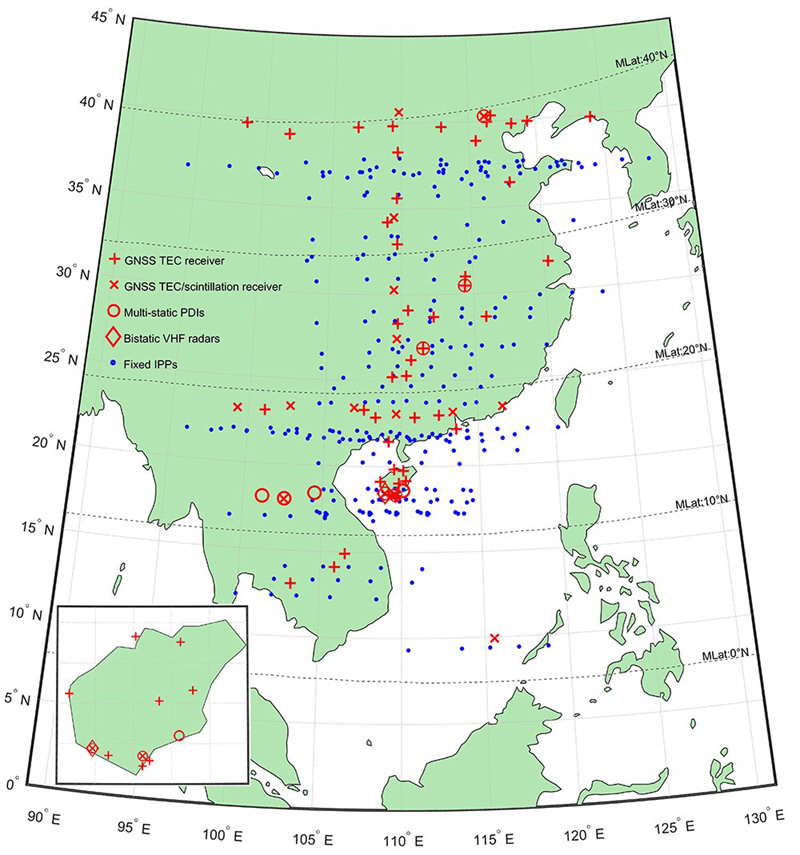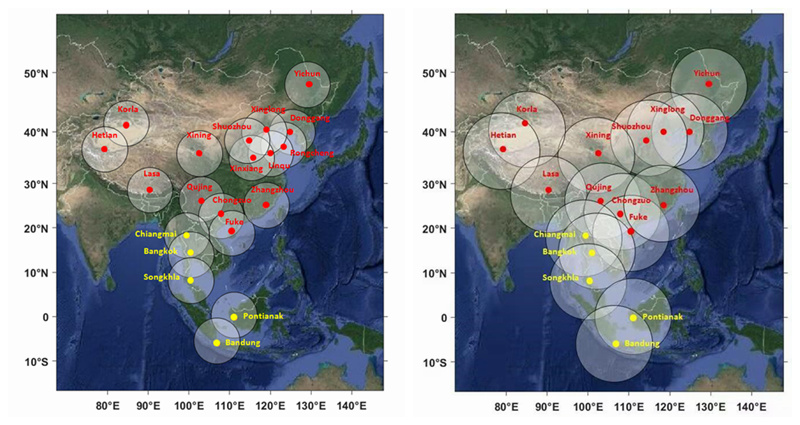Located near the equator, the Southeast Asia observation network enjoys observation advantages due to the unique location. The network can observe space weather phenomena near the equator, which is an important part of the international meridian circle observation network at low latitudes. Currently, there are two important observation networks in the Southeast Asia region, namely the Ionospheric Observation Network for Irregularity and Scintillation in East/Southeast Asia (IONISE) and the China-Southeast Asia Double-Layer Airglow Network.
Ionospheric Observation Network for Irregularity and Scintillation in East/Southeast Asia (IONISE)
Under the support of NSFC, the Chinese Academy of Sciences, and the Chinese Meridian Project, an Ionospheric Observation Network for Irregularity and Scintillation in East/Southeast Asia (IONISE) is currently under construction, which mainly includes three chains of GNSS TEC/scintillation receivers along 110°E, 23°N, and 40°N respectively which can track Beidou geostationary satellite signals, multi-static portable digital ionosondes which can be operated to obtain Doppler ionograms with a time interval less than 1 min for vertical and oblique observations, and VHF radars for beam steering and multi-baseline imaging observations. Various forms of cooperation are welcome e.g. data sharing/exchange, providing sites for instrument installation.
The scientific objectives of the IONISE are to 1) trace the occurrence and movements of ionospheric irregularities producing GNSS loss-of-lock and scintillations, 2) capture ionospheric disturbances of various scales by natural sources e.g. low atmosphere activity, geomagnetic activity and earthquake, and 3) reveal extremely large gradients of background ionosphere over southern China and adjacent regions.

China-Southeast Asia Double-Layer Airglow Network
To better understand the disturbances and their effects on the middle and upper atmosphere, a double-layer airglow imager network was established in China. This network focuses on two airglow layers: the OH airglow layer near 87 km and the OI red‐line airglow layer that peaks at about 250 km. By integrating multiple sites, the network can greatly expand the horizon of a single site. It can study gravity waves (GW) from small to large scale. The network can study the propagation and evolution of these gravity waves in both vertical and horizontal directions over large horizontal regions ranging from thousands of meters to thousands of kilometers, and illustrates the physical processes of atmospheric wave coupling in different atmospheres and different regions. The network enabled, for the first time, the extensive and systematic observation of airglow in China.

China-Southeast Asia Double-Layer Airglow Network





